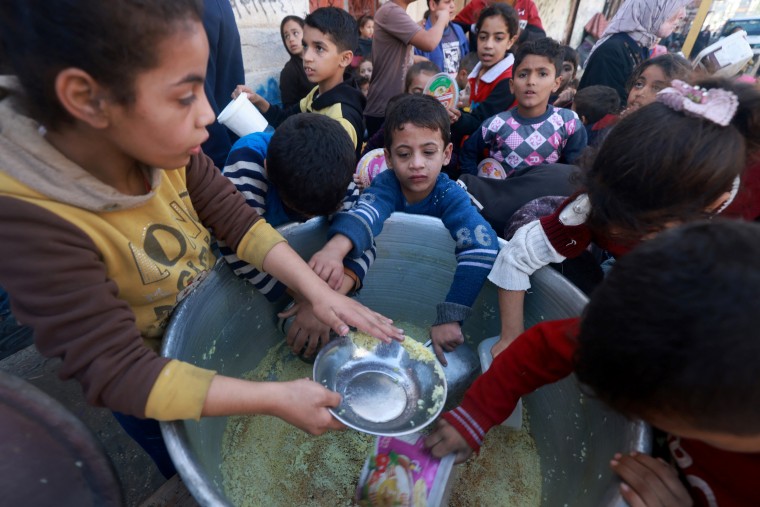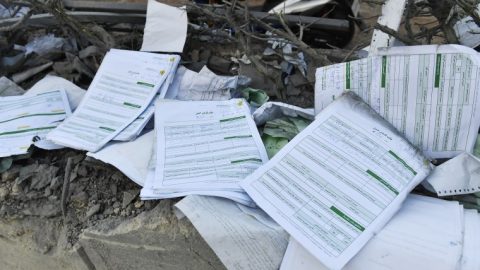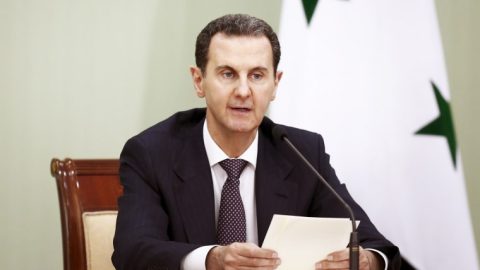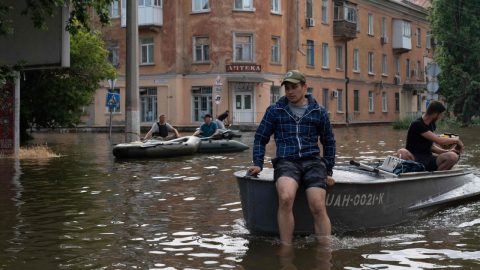Representatives for several international humanitarian groups are struggling to describe the new lows after having spent much of the past two months of war ringing alarm bells about conditions on the ground in Gaza.
“Those who survived the bombardment now face imminent risk of dying of starvation and disease,” Alexandra Saieh of Save the Children said during a press briefing on Thursday.
“The lack of water and hygiene is aggravating the diseases: diarrhea, vomiting, skin allergy, lice in the children’s hair,” said Chiara Saccardi, regional head of Action Against Hunger.
During last month’s temporary pause in fighting, the World Food Programme conducted a rapid food assessment, which it released on Wednesday, concluding that the situation in Gaza was “alarming.”
In a statement issued after a visit to Gaza on Friday, WFP Deputy Executive Director Carl Skau said, “Gazans are simply not eating.”
He described “confusion at warehouses, distribution points with thousands of desperate hungry people, supermarkets with bare shelves, and overcrowded shelters with bursting bathrooms. The dull thud of bombs was the soundtrack for our day.”
Eighty-three percent of households in southern Gaza have inadequate food consumption, according to the report, with 38% suffering from “severe levels of hunger.”
In a press call with international journalists on Thursday, Oxfam’s Khalidi and others described the conditions in Gaza as “not survivable.”
“Oxfam categorically views these actions, including the use of starvation as a war weapon, massive civilian killings and collective punishment, as war crimes,” she said, referring to the Israeli-imposed siege that has cut off food, water, electricity and fuel since the war began.
On Thursday, U.N. Secretary-General António Guterres warned that the humanitarian support system in Gaza was at high risk of collapse: “We anticipate it will result in a complete breakdown of public order.”
NBC News has reached out to the Israeli government for comment.

While humanitarian aid has since entered the strip, it’s a fraction of what is needed.
Approximately 500 trucks entered Gaza daily before the hostilities, and during the seven-day truce, that number was approximately 300. Since the collapse of the cease-fire, aid distribution has dropped again.
According to the United Nations humanitarian aid agency, as of Friday, only a limited amount of aid was entering Gaza, and distribution is restricted to a small area around the city of Rafah, on the Egyptian border. Aid to Khan Younis and central Gaza “has largely stopped over the past few days due to the intensity of hostilities and restrictions of movement along the main roads,” the situation report said.
There is too little aid and too many people, and that is breeding desperation, the organizations said.
Last week, a group of locals searching for food rushed an aid truck and prevented it from unloading in Al Mawasi, a Bedouin town in southern Gaza, Isabelle Defourny, president of Doctors without Borders, said.
The truck was carrying only medicine, but the incident was “reflective of the terrible situation where there are people and the real lack of food and of everything,” Defourny said.
And the chaos compounds the dangers from Israel’s bombardment, making it even harder to deliver what little relief aid there is.






Recent Comments